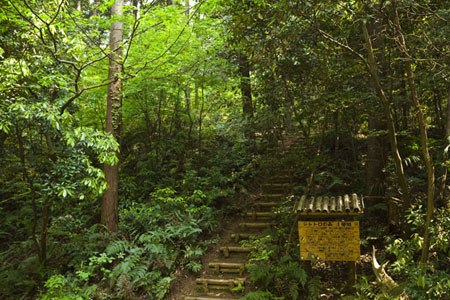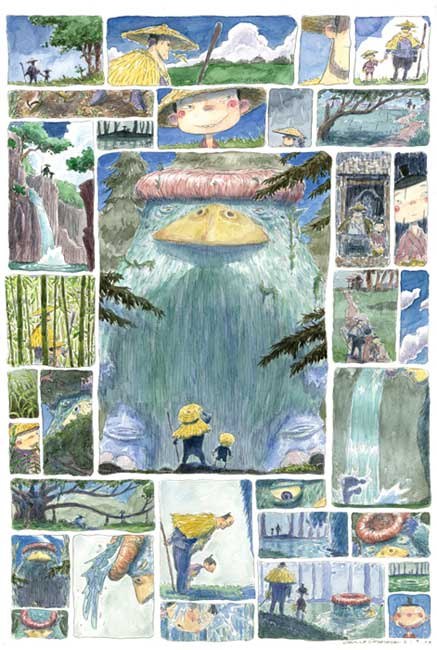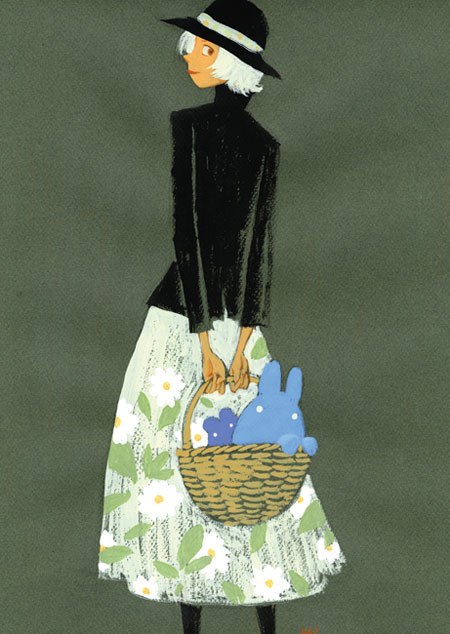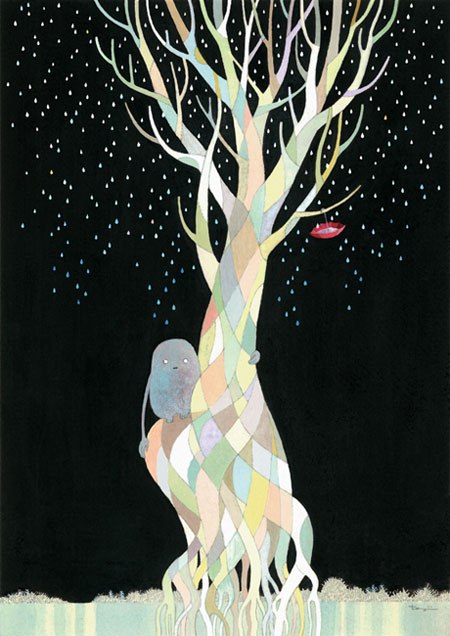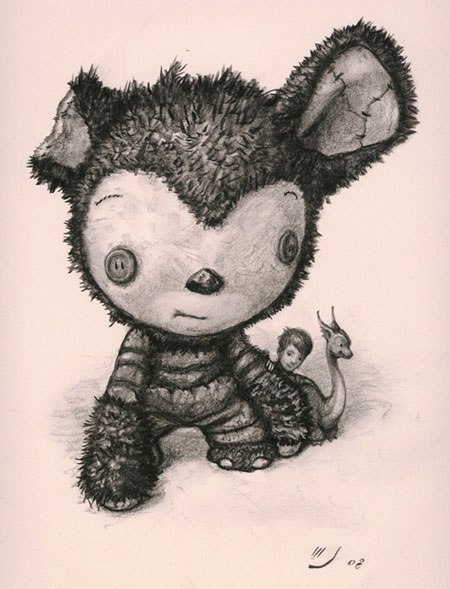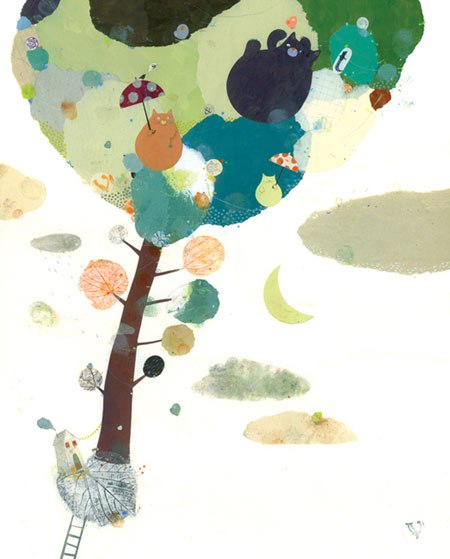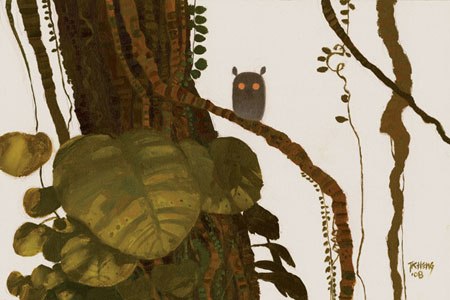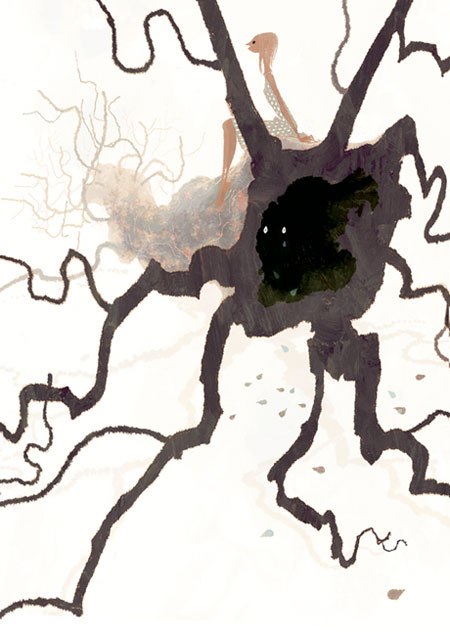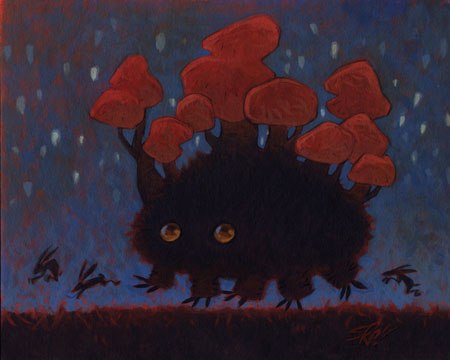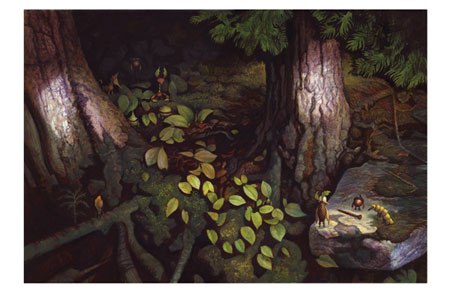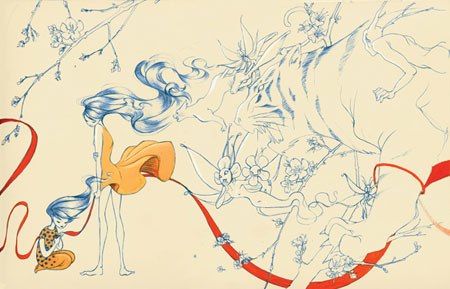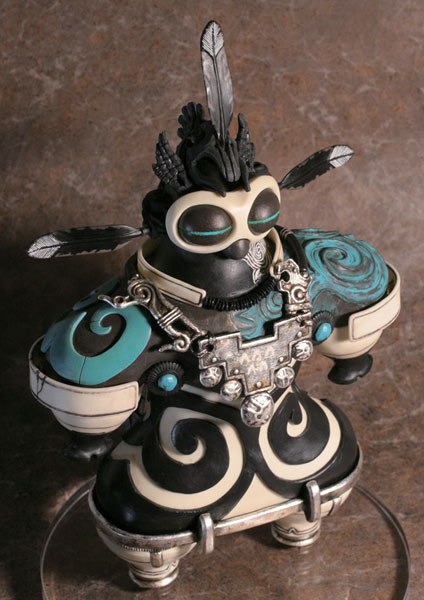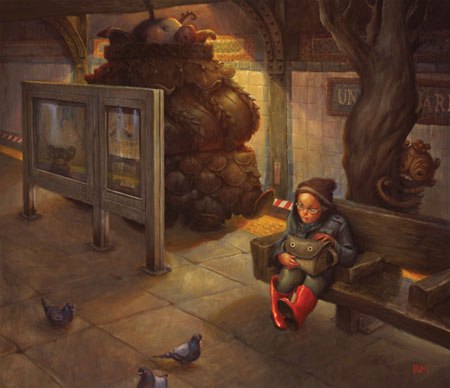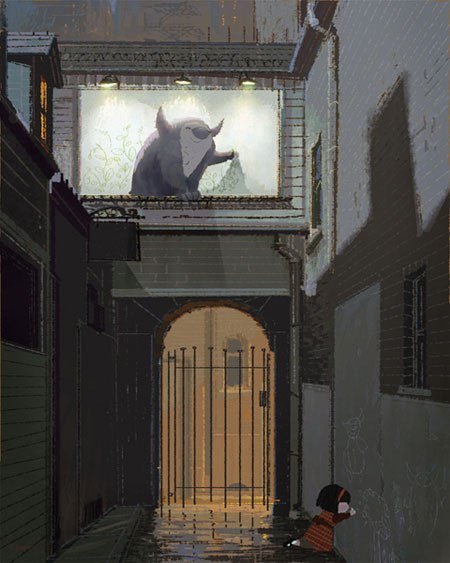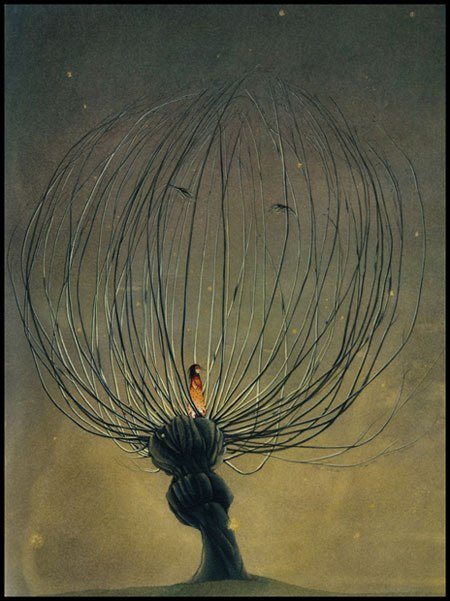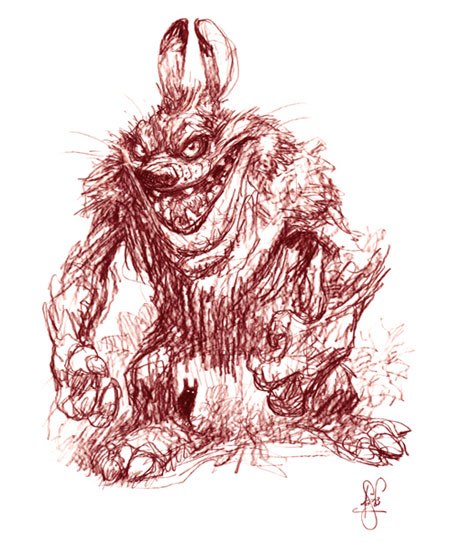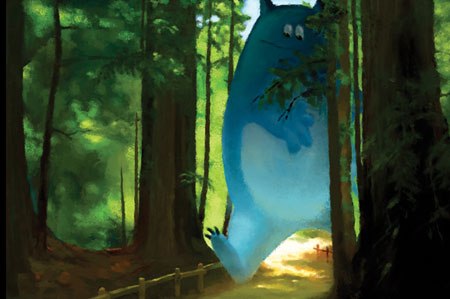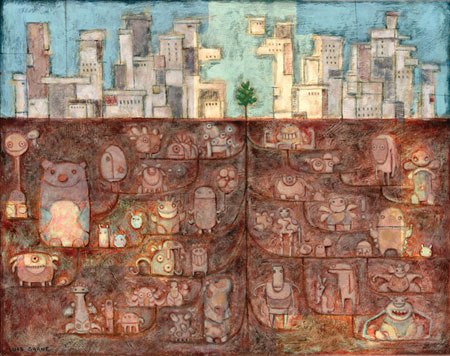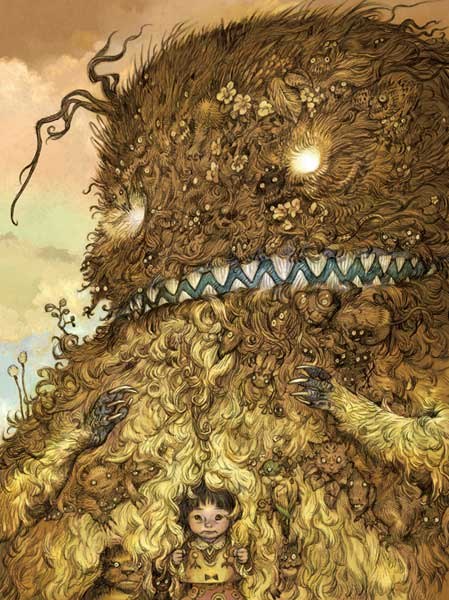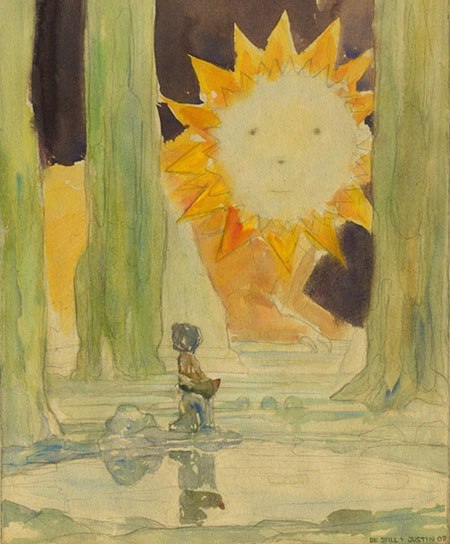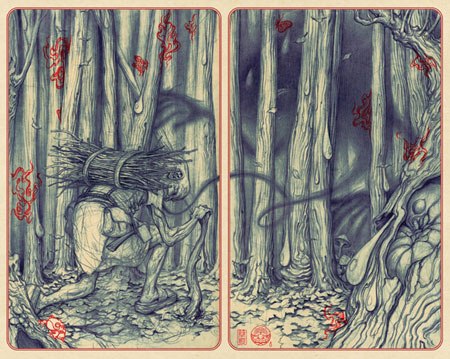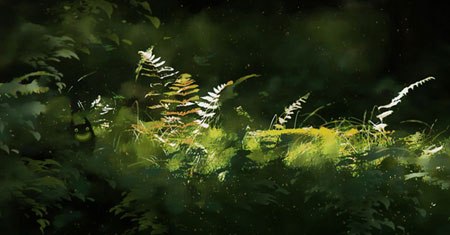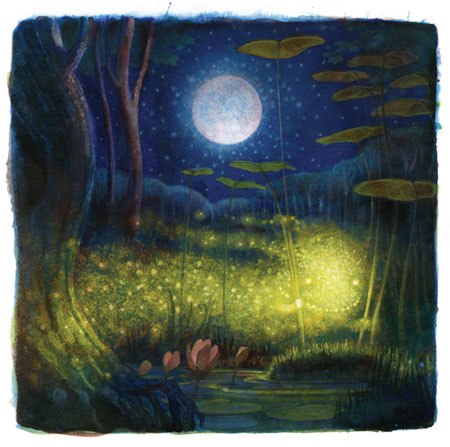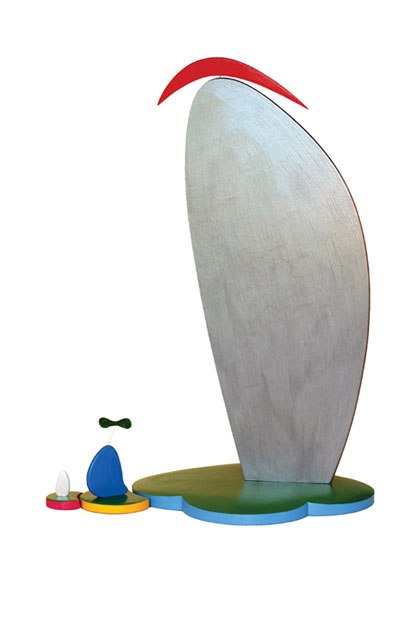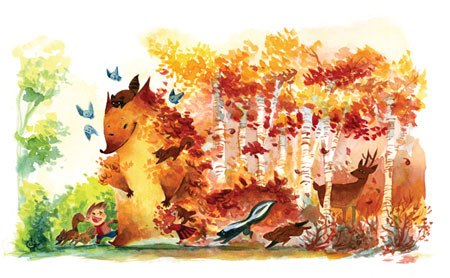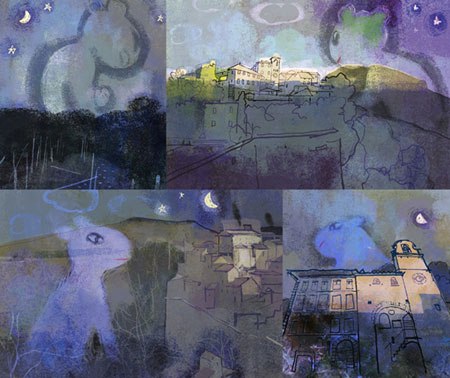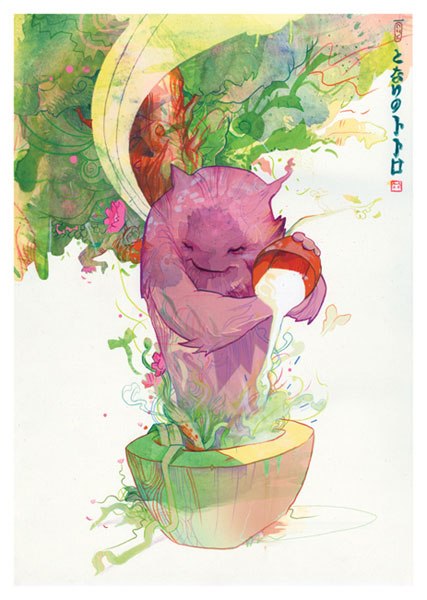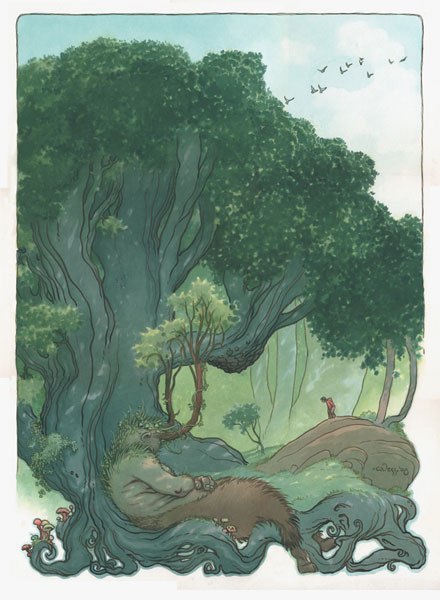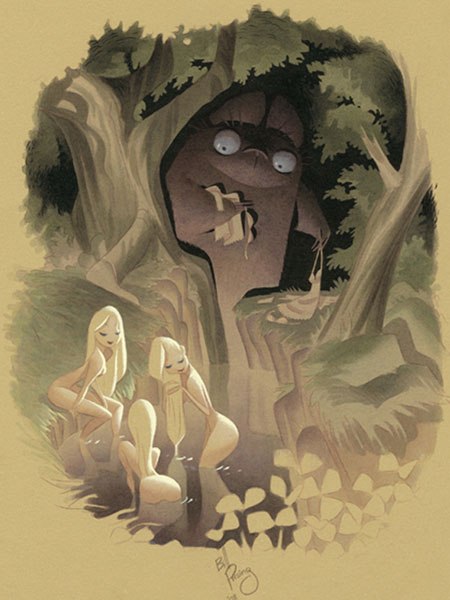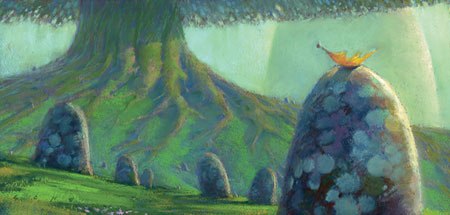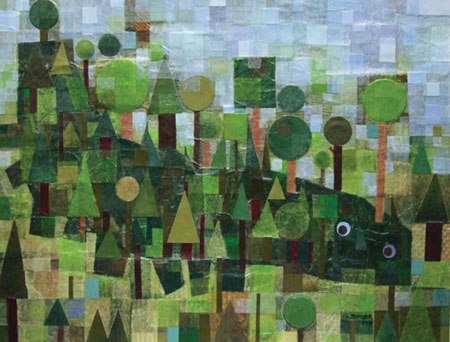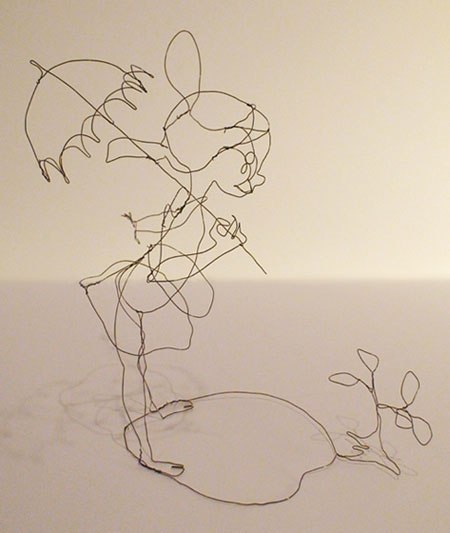If you haven't heard about the amazing Totoro Forest Project fund-raising exhibition/auction, which will be held Sept. 6th at Pixar, then you are missing out on some fabulous artwork being sold for a great cause. Spearheaded by Pixar art director Dice Tsutsumi, the event features artwork from some the top animators and illustrators working today. Check out this artwork!
If you haven't heard about the amazing Totoro Forest Project fund-raising exhibition/auction, which will be held Sept. 6th at Pixar, then you are missing out on some fabulous artwork being sold for a great cause. Spearheaded by Pixar art director Dice Tsutsumi, the event features artwork from some the top animators and illustrators working today. The proceeds will go to helping preserve the Sayama Forest, an 8750-acres urban forest in Tokyo. The woods inspired Hayao Miyazaki's masterpiece My Neighbor Totoro and the Totoro no Furusato Fund has been the Oscar-winner's most cherished charity for years.
Read this brief interview with the organizers of the benefit and check out some of the artwork, then head over to the Totoro Forest Project website to find out how you can help.![]()
Dice Tsutsumi -- rep Totoro Forest Project Art Director Pixar Animation Studios
How did the auction come about?
I saw the news about the struggle Totoro no Furusato Fund was having last year. I felt like we had to do something. There are so many people in the animation/comic/illustration field whose work was heavily influenced and inspired by Miyazaki's work and I literally felt we owed him for all the inspirations. I happened to be going back to Japan around that time and planning to visit Studio Ghibli and I mentioned the idea to them to get their blessing.
As soon as I came back to the States, I brought my friends Enrico Casarosa, Ronnie del Carmen and Yukino Pang into this mix to organize this charity auction.
What is the Totoro Forest Trust Fund?
Totoro No Furusato (Totoro's Homeland) National Fund – also known as the Totoro Forest Fund is a non-profit organization dedicated to preserving Sayama Forest which inspired the landscape of My Neighbor Totoro, a film by Hayao Miyazaki.
The forest has been the subject of preservation efforts since the 1970s, but because land is at such a premium in the Tokyo area, it is under constant threat of development. The Totoro No Furusato National Fund was established in 1990 following the success of My Neighbor Totoro and the attention the film drew to the Sayama Forest. Hayao Miyazaki himself has been one of the biggest supporters of the organization all these years.
How did you get so many great artists to participate?
I think there are two things.
* Hayao Miyazaki is such an influential and well respected figure in not just animation but illustration and comics today. There are just so many artists who want to give tribute to the master filmmaker.
* On top of their desire to show their appreciation to Hayao Miyazaki, a lot of artists wanted to be a part of this great project that involved so many other great artists. Artists do their best work when they are inspired. We kept everyone's in-progress work open to each other on the artists -it was the only website where anyone can see what anyone else was working on. Everyone inspired each other and pushed each other's work up a notch or two. It was one of those synergy effects in the end.
Has Miyazaki been involved in the auction in anyway?
We made sure we wouldn't bother Miyazaki-san especially since he was in the middle of the production of his new film Ponyo on a Cliff. While we had a blessing from Studio Ghibli, it would have defeated the purpose if we asked him to do anything for this. This had to come from us who respected Hayao Miyazaki and who cared about the birth place of Totoro.
In the end, though, Miyazaki sent us his beautiful watercolor painting with his big "thank you," which made us all happier than ever.
Tell us a bit about your background in animation
I started my career as a staff illustrator for Lucas Learning Ltd. in San Francisco. Two years later, I moved back to NY to work for Blue Sky Studios as a visual development/color key artist on their blockbuster film projects such as Ice Age, Robots and Horton Hears A Who. After my long adventurous seven-year run at Blue Sky Studios, I made a shift in 2007 to join Pixar Animation Studios as an art director.
How has Miyazaki influenced your work? As a Japanese artist, there is undeniable evidence that I'm heavily influenced by Hayao Miyazaki's work. All my art education was in NY where I studied very academic Western oil painting and you may not see much of Miyazaki or even any anime style in my work. But there is no one else whose work comes across as sincere as Hayao Miyazaki and that is always how I'd hope to pursue my art. Enrico Casarosa Story Artist Pixar Animation Studios
Tell us a bit about your background in animation.
I've worked in animation for a dozen years now. I started my career in the mid nineties working on TV series for smaller studios in New York City as background designer capacity at first and then I slowly made my way into a storyboarding position. A few years later I ended up working on Ice Age at Blue Sky Studios and after that made my move out West to Pixar Animation Studios, where I've been a storyboard artist for the past seven years. I've had the pleasure of working on Ratatouille and now Up.
How has Miyazaki influenced your work?
Ah, in almost every way possible. I grew up in Italy where as a boy I had the fortune of watching Miyazaki's and Takahata's earlier TV series work. Wonderful stuff like Future Boy Conan, Heidi, Sherlock Hound and Three thousand leagues in search of mother. These series made a lasting impression on me, later when I discovered Studio Ghibli's featured length films they immediately had this deep nostalgic connection to what I loved as a boy.To this day after years of being in this profession his work still has a daily influence on me: If I feel stuck or uninspired the first place I look for some inspiration is one Miyazaki's storyboard books (E-contes) or some of his comics. I absolutely love his quick and direct drawing and watercolor style. I've been studying and admiring this man's work for so many years that its influence has seeped into almost everything I draw.
In many respects I feel that even just taking a chance in following this career has been influenced by Miyazaki San, I don't know if I'd be where I am at without the inspiration of his whimsical and unique work. Ronnie del Carmen Story Supervisor Pixar Animation Studios
Ronnie joined Pixar Animation Studios in the summer of 2000 during the production on Finding Nemo and served as a story supervisor on the film. He did production design on the Academy Award-nominated short film, One Man Band. He did story work on Ratatouille and WALL-E. He is currently Story Supervisor on Pete Docter's film, Up
Ronnie attended the University of Santo Tomas in the Philippines, where he earned his Bachelor of Fine Arts in Advertising. Upon moving to the United States, he served as storyboard artist for Batman: The Animated Series, then worked for DreamWorks, as a story supervisor.
He has received a Daytime Emmy Award as an animation director and an Eisner Award for comic book work. He self-publishes his own comic book, Paper Biscuit and does children's book illustration.
How Miyazaki influenced my work?
Hayao Miyazaki makes you pay attention to the spaces between moments. Those times you remember when you noticed how the sun dapples on the grass, hear the sound of water and feel a slight breeze. Like a slight of hand, he does it without putting them on center stage. He can make the simple task to preparing food -- mind you this is all in 2D, hand drawn -- be so compellingly familiar and comforting, outshining most filmed moments of similar scenes. That's powerful storytelling and uncommon in the landscape of movies that are too often about spectacle and intense detail. I aspire to put those moments in the work I do and I'd be happy to get even close to something like those examples he so masterfully gifts us with in his stories.
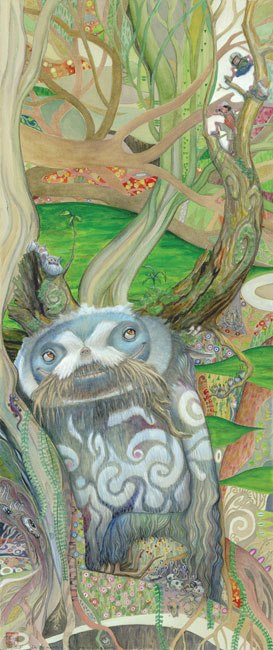
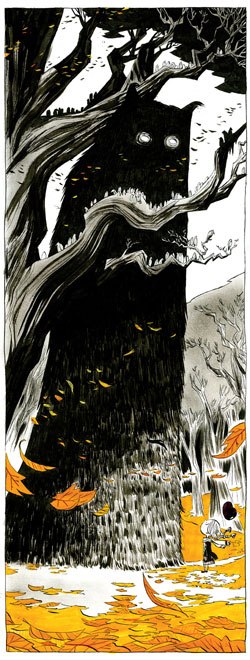
Dan Sarto is Publisher and Editor-in-Chief of Animation World Network.
